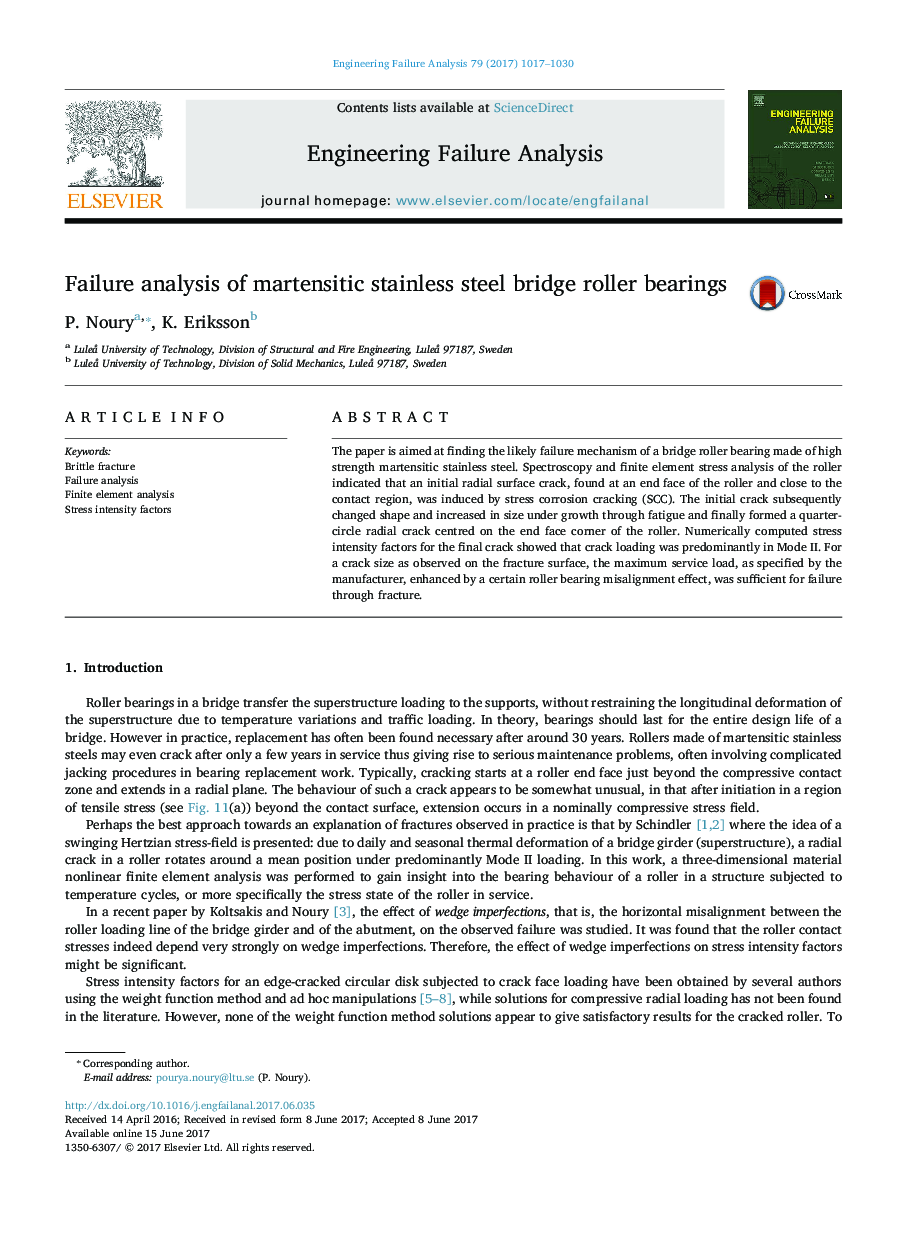| Article ID | Journal | Published Year | Pages | File Type |
|---|---|---|---|---|
| 5013612 | Engineering Failure Analysis | 2017 | 14 Pages |
Abstract
The paper is aimed at finding the likely failure mechanism of a bridge roller bearing made of high strength martensitic stainless steel. Spectroscopy and finite element stress analysis of the roller indicated that an initial radial surface crack, found at an end face of the roller and close to the contact region, was induced by stress corrosion cracking (SCC). The initial crack subsequently changed shape and increased in size under growth through fatigue and finally formed a quarter-circle radial crack centred on the end face corner of the roller. Numerically computed stress intensity factors for the final crack showed that crack loading was predominantly in Mode II. For a crack size as observed on the fracture surface, the maximum service load, as specified by the manufacturer, enhanced by a certain roller bearing misalignment effect, was sufficient for failure through fracture.
Related Topics
Physical Sciences and Engineering
Engineering
Industrial and Manufacturing Engineering
Authors
P. Noury, K. Eriksson,
